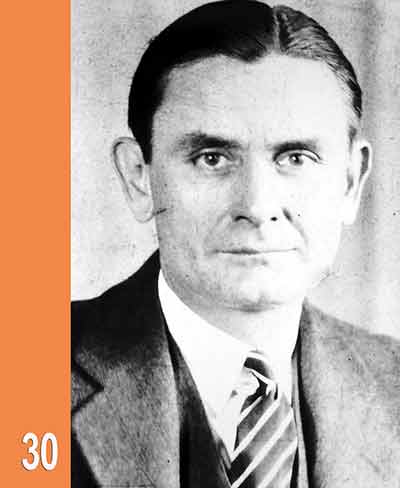James Pinckney Alley
Induction Year:¬Ý1993
Lived:¬Ý1885-1934
Papers:
The Commercial Appeal, Memphis
James Pinckney Alley earned fame as editorial cartoonist for the Commercial Appeal of Memphis, where he contributed to a Pulitzer Prize and where he created the cartoon character, Hambone. Alley worked for the newspaper from 1916 until 1934. He was born January 11, 1885, at Sidel in Saline County, Arkansas, and graduated from Benton public schools in 1903. He was a self-taught illustrator and commercial artist.
Alley moved to Little Rock in 1903, where he worked in a grocery store, and began to submit illustrations for publication in the Arkansas Democrat and the Southern Breeze. He was employed as a commercial artist by Cronk & Foster Engraving Co. in 1908. A year later he moved to Memphis to work for Bluff City Engraving Company, which was housed in the same building with the Commercial Appeal. In that job he became acquainted with the paper's editor C.P.J. Mooney.
Alley did free-lance assignments for the paper before joining full-time in 1916. His debut in the Commercial Appeal was June 6, 1914, but his first work was unsigned. Editor Mooney pressed Alley for more and more cartoons to illustrate the paper's position on local politics. Memphis Mayor E.H. Crump was the target of much criticism from the Commercial Appeal, and Alley's cartoons were no small part of the campaign against "Boss" Crump. During this time Alley showed a rapid growth in technique, bite, and humor.
By April 1916, Alley was appearing on a daily basis and had started to find subject matter in national and international events. When Bluff City Engraving Company asked Alley to make a choice between his two employers, Alley moved into a small office at the Commercial Appeal. He began the widely syndicated editorial cartoon feature "Hambone's Meditations" in 1916, and published two collections in book form in 1917 and 1920. Additionally, he had published two editions of a book of caricature profiles, Distinguished Folks, in 1924 and 1928.
Alley found material for his cartoons in politics-local and national-and in World War I. Alley's obituary declared that his cartoons during the war period were inspirational. "He had a fine sense of its tragedies. Patriotism and idealism spoke through his pen," the obituary read.
Hambone was a character that appeared in some of Alley's early editorial cartoons, but the character was so popular that Alley created a separate cartoon, which was syndicated. Hambone was a wise and witty African-American who entertained readers for years with his vernacular philosophy. The feature was continued after Alley's death by his son until 1968.
Alley's cartoons were credited with helping the Commercial Appeal win a Pulitzer Prize in 1923 for its stand against the Ku Klux Klan. Praising Alley's contribution, editor Mooney wrote: "We are mighty proud of this Arkansas boy, and we are glad that the impact of his pencil is far-reaching."
Alley died on April 16, 1934. Just as Hambone wept at the death of Commercial Appeal editor C.P.J. Mooney, the uncaptioned cartoon for April 17, drawn by his successor, showed Alley's little philosopher grieving at the drawing board of his creator.
Alley was famous for his generosity with the originals of his work and often gave them away to the first person who requested them. Many of his drawings are a part of the permanent collection at the Brooks Memorial Art Gallery in Memphis.
